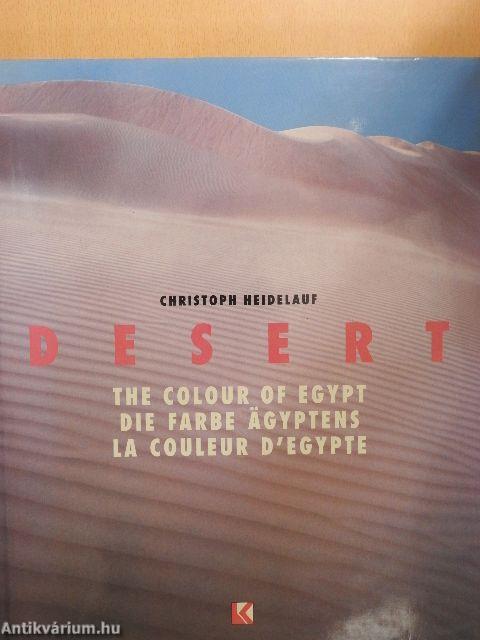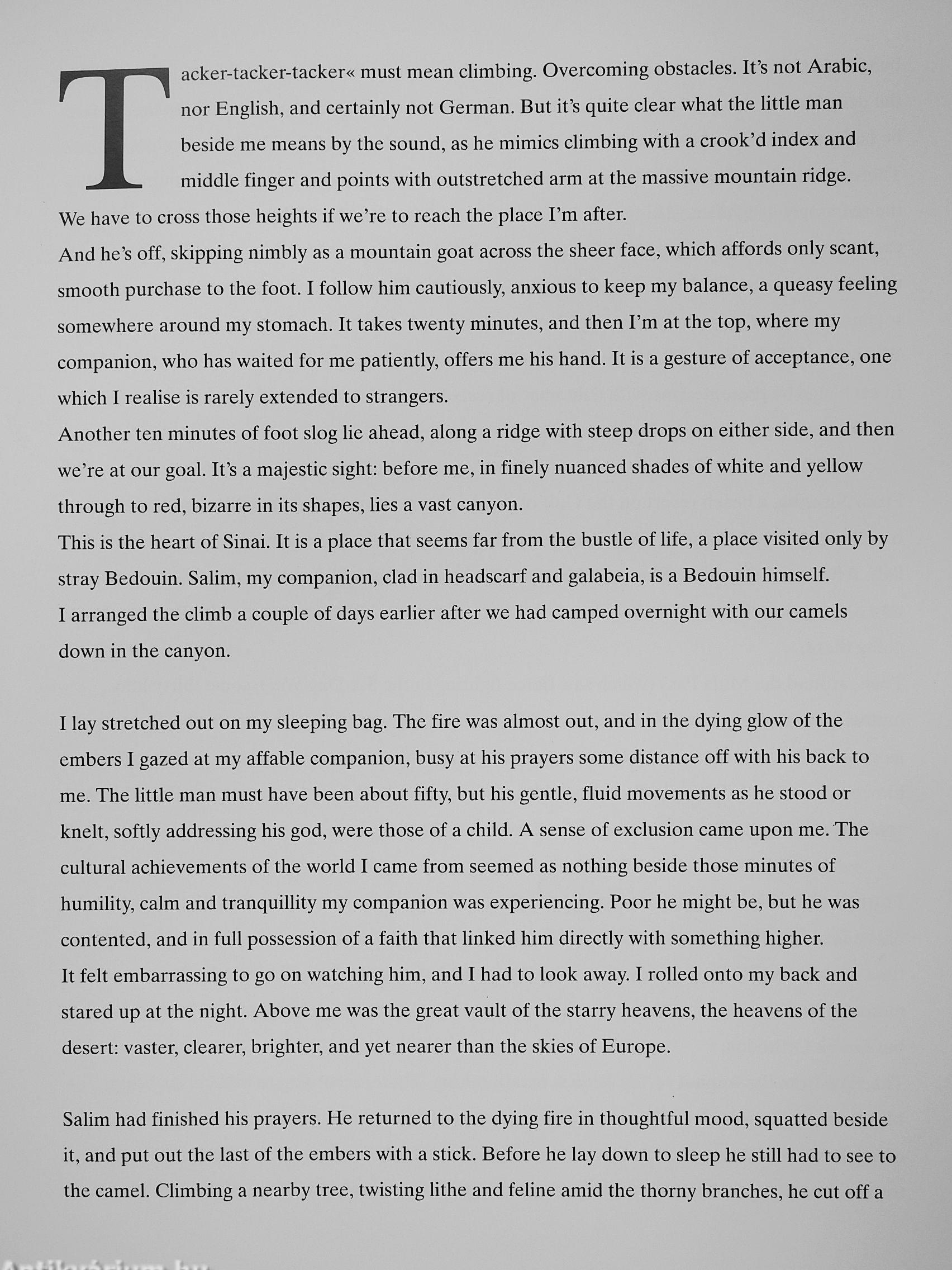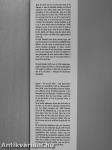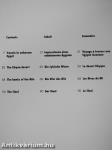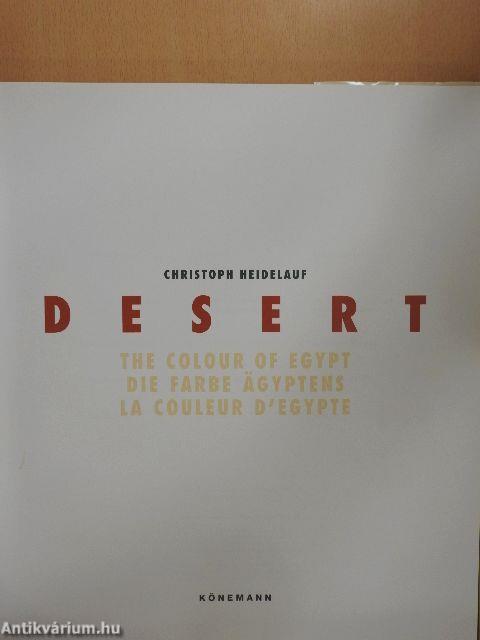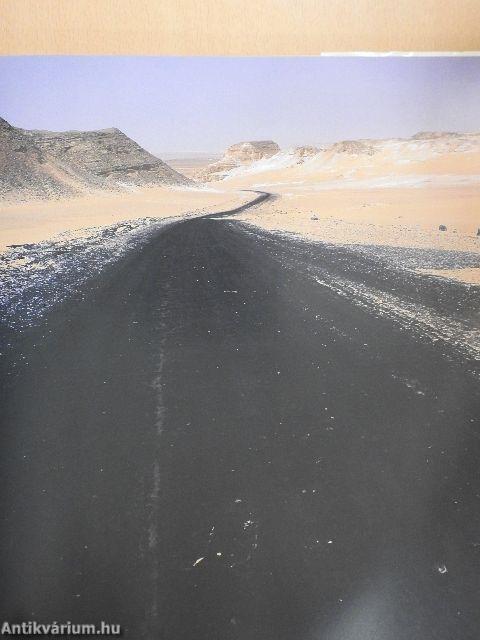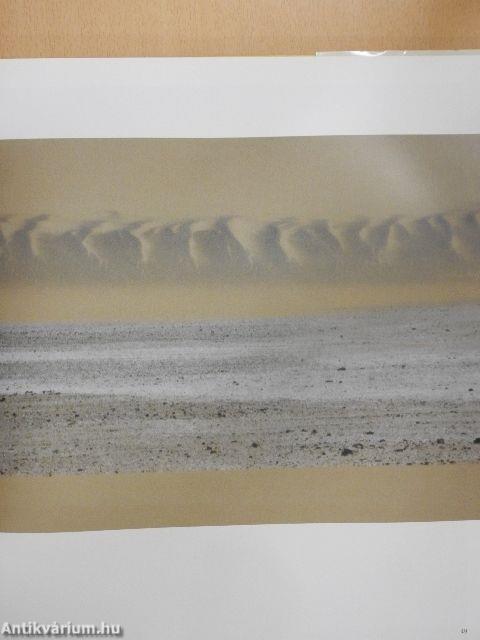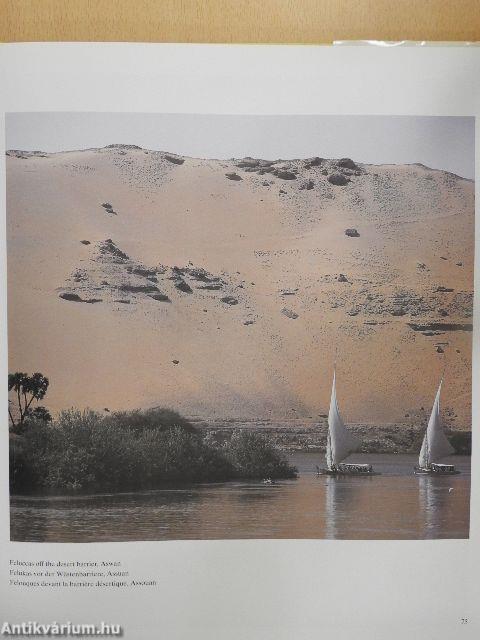1.067.073
kiadvánnyal nyújtjuk Magyarország legnagyobb antikvár könyv-kínálatát

VISSZA
A TETEJÉRE
JAVASLATOKÉszre-
vételek
Desert
The Colour of Egypt/Die farbe Ägyptens/La couleur d'Egypte
| Kiadó: | Könemann Verlagsgesellschaft mbH |
|---|---|
| Kiadás helye: | Köln |
| Kiadás éve: | |
| Kötés típusa: | Vászon |
| Oldalszám: | 138 oldal |
| Sorozatcím: | |
| Kötetszám: | |
| Nyelv: | Angol Német Francia |
| Méret: | 32 cm x 28 cm |
| ISBN: | 3-89508-043-8 |
| Megjegyzés: | Színes fotókkal. |
naponta értesítjük a beérkező friss
kiadványokról
naponta értesítjük a beérkező friss
kiadványokról
Előszó
TovábbFülszöveg
ilSiP
Egypt, the desert land, was once ihe great empire ol the Pharaohs, a realm of !nrokulable splendour and cultural significance. Sixty million people crowd into the great metropolises ol Cairo and Alexandria, living in Ihe Nile delta and along the rlverhonk strips ol fertile land, while the remaining ninety-five per cent of the country ore lost in unending desert. It was that desert port of an ancient civilization that photographer Christoph Heidelauf set off to see. In three solitary months he travelled over ] 0,000 kilometres by jeep, on fool and by comel. His route led through fhe tibyon desert, to the old oases of Boboriya, Forofro, Dakhlo and El Khargo, along the southern bonks of the Nile to Aswan, and finally to the rugged mountains of the Sinai.
Christoph Heidelouf's book about unknown Egypt, with impressive pictures and a commentary of delightful lyrical lightness, not only records on unusual journey but also presents londscape photographs of unique evocative... Tovább
Fülszöveg
ilSiP
Egypt, the desert land, was once ihe great empire ol the Pharaohs, a realm of !nrokulable splendour and cultural significance. Sixty million people crowd into the great metropolises ol Cairo and Alexandria, living in Ihe Nile delta and along the rlverhonk strips ol fertile land, while the remaining ninety-five per cent of the country ore lost in unending desert. It was that desert port of an ancient civilization that photographer Christoph Heidelauf set off to see. In three solitary months he travelled over ] 0,000 kilometres by jeep, on fool and by comel. His route led through fhe tibyon desert, to the old oases of Boboriya, Forofro, Dakhlo and El Khargo, along the southern bonks of the Nile to Aswan, and finally to the rugged mountains of the Sinai.
Christoph Heidelouf's book about unknown Egypt, with impressive pictures and a commentary of delightful lyrical lightness, not only records on unusual journey but also presents londscape photographs of unique evocative power. We ore drawn for info these distances, encouraged to let our goze wander and to be silent and meditative. In these photographs, the entire creative might of Nature is visible, and we clearly sense the very special rhythms of silence in the desert land.
Christoph Heidelauf, DGPh, born in 1948, studied photography in Cologne and works as a free-lance photographer in Düsseldorf. In addition to studio work, he devotes his time to his real passion - landscape and documentary photography.
Ägypten - dos Land der Wüste - einst pharoonisches Weltreich von unermeßlicher Pracht und kulturgeschichtlicher Grölie, vereint landschaftliche Kontroste ohnegleichen. Wahrend sich die 60 Millionen Menschen in den Metropolen Kairo und Alexandria, im Nildelta und entlang den fruchlboren Ufern des Flusses drangen, verliert sich der Rest des Landes, ca. 95% des gesamten Gebiets, in endloser Wüste.
Diesen weithin unbekannten Teil der alten Kullurnotion zu erkunden, war das Ziel des Fotografen Christoph Heidelauf. Drei Monate Einsamkeit und 10000 Kilometer Strecke mit dem Geländefahrzeug, zu Füll oder auf dem Komel liegen hinter ihm. Die Reise führte ihn in die lybische Wüste mit ihren ollen Oasen Bahariyo, Forofro, Dokblo und El Khargo, entlang den südlichen Ufern des Nils bis Assuon und in die zerklühefe Berglondscbofl des Sinai.
Mil eindrucksvollen Abbildungen sowie einer literarischen Impression aus dem unbekonnlen Ägypten stellt Christoph Heidelauf in diesem Band nicht nur dos Dokument einer ungewöhnlichen Reise zusammen, sondern zeigt eine Landschohsfolografie von besonderer Suggestion: der Blick wird in die Weite geführt, kann schweifen und höh immer wieder inne an Bildern, auf denen die Natur ihre ganze Schöpfungskraft entwickelt. Deutlich spürt man den einmaligen Rhythmus der Stille im Land der Wüste. Vissza
Témakörök
- Idegennyelv > Idegennyelvű könyvek > Többnyelvű könyvek
- Útleírás > Idegennyelvű útleírás > Egyéb
- Útleírás > Kontinensek > Afrika > Észak-Afrika
- Útleírás > Kontinensek > Afrika > Sivatag
- Útleírás > Más népek
- Művészetek > Fotóművészet > Albumok > Külföldi
- Művészetek > Fotóművészet > Albumok > Tematikus
- Művészetek > Fotóművészet > Idegen nyelv > Többnyelvű
- Művészetek > Fotóművészet > Témái > Fotódokumentumok
- Művészetek > Fotóművészet > Témái > Tájfényképészet
- Művészetek > Fotóművészet > Témái > Természet
Christoph Heidelauf
Christoph Heidelauf műveinek az Antikvarium.hu-n kapható vagy előjegyezhető listáját itt tekintheti meg: Christoph Heidelauf könyvek, művekMegvásárolható példányok
Nincs megvásárolható példány
A könyv összes megrendelhető példánya elfogyott. Ha kívánja, előjegyezheti a könyvet, és amint a könyv egy újabb példánya elérhető lesz, értesítjük.



